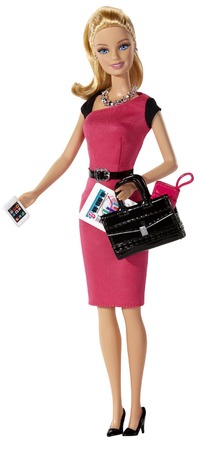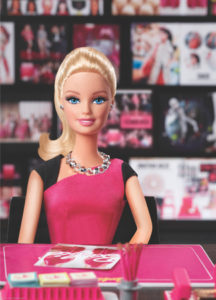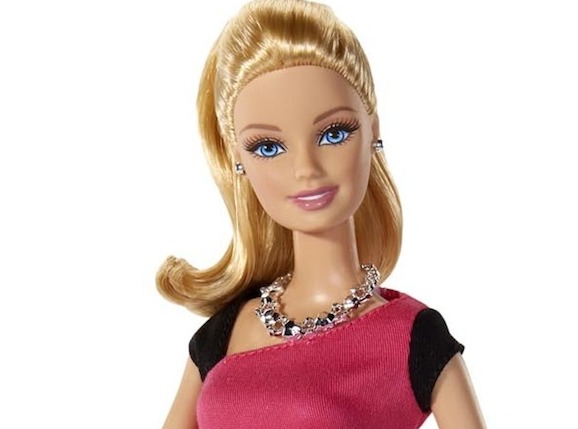 After more than 50 years of reign in the girl’s toy industry, Barbie is finally aspiring to more than shopping all day or cooking dinner for Ken in her dream house. While Barbie dabbled in careers such as modeling, dancing or being a nurse, she is finally breaking free from the female stereotypes. Introducing Entrepreneur Barbie, the doll who never leaves home without her smartphone and tablet, and whose slogan is “If you can dream it, you can do it.”
After more than 50 years of reign in the girl’s toy industry, Barbie is finally aspiring to more than shopping all day or cooking dinner for Ken in her dream house. While Barbie dabbled in careers such as modeling, dancing or being a nurse, she is finally breaking free from the female stereotypes. Introducing Entrepreneur Barbie, the doll who never leaves home without her smartphone and tablet, and whose slogan is “If you can dream it, you can do it.”
Entrepreneur Barbie is more than just a new toy for girls to play with, but a way to show them that they don’t have to be confined to choosing “female careers.” Society’s image of an engineer or a CEO is typically a nerdy guy in glasses or a powerful man in a business suit. That is starting to change. The US Department of Labor estimates 57 percent of women are expected to participate in the labor force by 2020. More and more women are aspiring to be CEO’s or start their own companies, and that all starts with what they are told they can be as a child.
Entrepreneur Barbie is meant to challenge the idea that only men can aspire to technology-based, money-making careers, according to a Wired article. If a little girl plays with a businesswoman doll and creating an imaginary life for her, then hopefully this image will translate to the girl’s career dreams too. Girls are no longer seeing their mom’s stay at home, but go out and find success in the business world. Entrepreneur Barbie is presenting the same image that more accurately portrays working women today, accompanied by Astronaut Barbie, Surgeon Barbie and Police Officer Barbie.
Barbie has taken a lot of criticism over the years for presenting one look: blonde, skinny and white. Barbie’s monotone look left millions of other girls searching for dolls that look like them. Since then, Barbie’s of all different nationalities have been released, including a bald barbie aimed at cheering up young children with cancer.
There is still a long way to go as far as Barbie’s body image, however, which is realistically impossible to achieve. Yet we know that girls still aspire to be as unhealthily skinny as their fake dolls, which in turn leads to insecurity. The problem is not necessarily that they look at their doll and immediately feel distress. Instead, it is that they grow up with the idea that this is how women should look, which causes insecurity later in life.
 Barbie has also represented superficiality and materialism, with her endless amount of homes, planes, clothes, shoes, etc. Rather than working for these things, Barbie gets what she wants and most of the time just comes with these things in the box. Girls are therefore not shown the importance of working for success — something Entrepreneur Barbie will hopefully start to alter.
Barbie has also represented superficiality and materialism, with her endless amount of homes, planes, clothes, shoes, etc. Rather than working for these things, Barbie gets what she wants and most of the time just comes with these things in the box. Girls are therefore not shown the importance of working for success — something Entrepreneur Barbie will hopefully start to alter.
Additionally, the toy industry has been criticized for separating their toys by gender stereotypes, with boy’s toys consisting of building blocks and solving problems, while girl’s toys offer baking products and baby dolls to care for. Most girl’s toys teach them maternal skills that signal the most they will do in life is stay at home. Boys, on the other hand, are educated on science and math related skills that will help them toward careers as scientists or engineers.
Are girls not smart enough to learn these skills too? Should girls not aspire to the same careers as men? This is the message the toy industry is currently sending to their consumers.
The list could go on and on as far as the problems and insecurities girl’s toys, especially Barbie dolls, instill on young girls. Fortunately, it seems the toy industry is starting to move in the right direction as far as more accurately representing the modern women and taking their dreams and career goals into account.

















